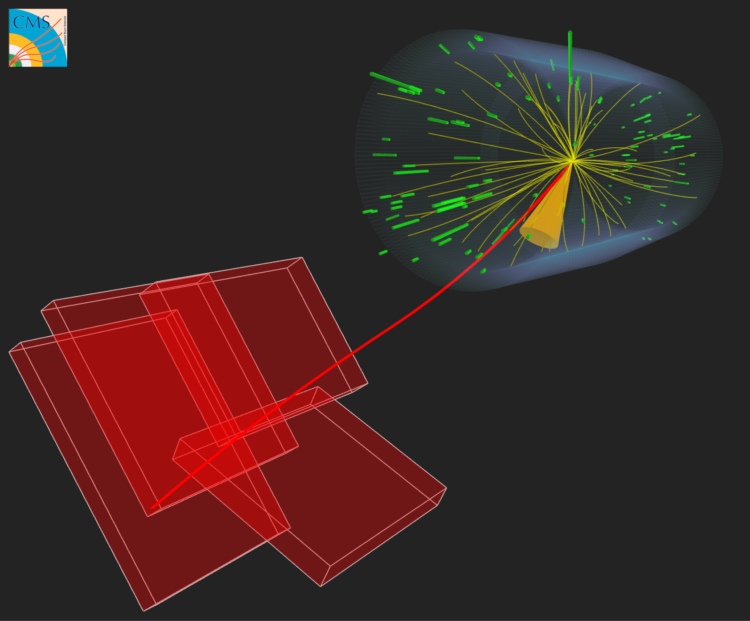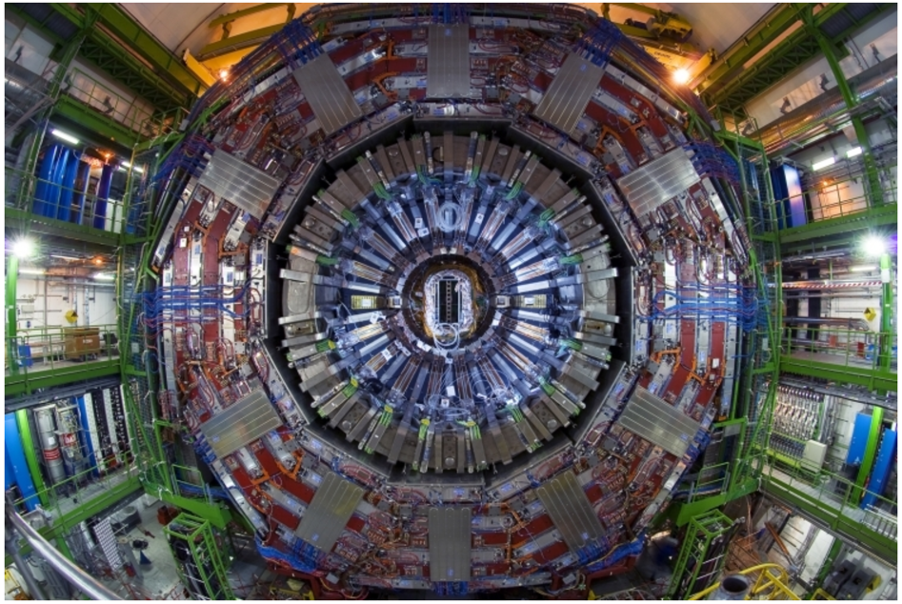
CMS sees evidence of the Upsilon meson decaying into two tau leptons for the first time at a hadron collider
Beyond our best current understanding of particle physics, encapsulated in the standard model, various theoretical models predict the existence of additional particles–including new scalar bosons–which could help explain mysteries such as dark matter or the imbalance between matter and antimatter. Many of these new physics models predict enhanced decays to tau leptons due to their large mass, making tau detection crucial in the hunt for physics beyond the Standard Model.
To identify potential new scalar bosons (φ), scientists examined events in which two tau leptons were produced. Because the tau lepton is heavier than the electron or muon, it can decay into particles containing quarks called hadrons, as well as undetectable neutrinos. This makes detection more challenging, as genuine tau decays must be distinguished from other more copious sources of hadrons called Quantum Chromodynamics (QCD).
One key feature of this study is the use of “Scouting” data. Normally, CMS triggers prioritize recording high-energy events. However in Scouting, lower trigger thresholds allow collection of lower-energy events, albeit with a reduced event size to keep data rates manageable. This helps researchers search for new physics particles with lower masses than allowed by the standard data acquisition process.
A new low-momentum hadronic tau reconstruction method was implemented within Scouting. A key innovation of this search was to “open up the tau cone”. Standard techniques for reconstructing hadronic tau decays focus on a narrow clustering of hadrons. While effective, this approach misses taus with very low momenta, like those from a low-mass φ. Using advanced machine learning, the team studied low-momentum taus and were able to rediscover the well-known Standard Model meson (Upsilon) in its decay into two tau leptons. This first-ever evidence at a hadron collider of the decay of the Upsilon into tau leptons verifies the experimental technique and paves the way for possible new-physics discoveries.


Figure 1: The visible momentum of a tau decay into pions is plotted against the opening angle of the decay products. The plot on the right shows products from the decay of a simulated Z boson, while the one on the left shows those from a much lighter Upsilon meson.
Due to the low mass of the Upsilon, the pions from the tau decay have a much larger opening angle. The standard Standard tau cone maximum, shown by the horizontal dotted line in Fig. 1, would miss these tau decays from low mass particles. Opening up the tau cone enhances sensitivity to taus from low mass particle decays.
The search specifically targeted φ boson masses between 20 and 60 GeV. Despite extensive analysis, no significant excess of events was observed beyond what the Standard Model predicts. However, the lack of discovery does not mean failure; instead, it sets important constraints on theoretical models that predict such a particle. This study provides the first-ever exclusion limits for a low-mass scalar boson decaying to tau pairs at a hadron collider. If such a particle exists, it must have a smaller production rate than previously thought, or it behaves differently than expected.
Although this search did not discover a new particle, it was able to uncover a well-known particle, and thus showcased the power of the advanced data collection and particle reconstruction technique of Scouting. By refining these methods further, researchers will be able to explore new, lower regions of momentum and mass previously thought to be out of reach. The quest for new particles is far from over. Whether through the discovery of a new boson, evidence of dark matter, or unexpected deviations from the Standard Model, the LHC remains at the forefront of unraveling the mysteries of the universe.


Figure 2: The invariant mass of the visible particles (Mvis) from the di-tau decay is shown for a region with low momentum taus, for hadronic tau decays to one or three charged pions (left) and a single charged pion with one or more neutral pions (right).
A resonance consistent with the Upsilon meson is clearly visible in Fig. 2 above a smooth background estimated with a polynomial. The excess at Mvis < 4 GeV is due to random combinations of very-low-momentum hadrons within jets. A fit to a simulation of Upsilon decaying to di-tau is overlaid on the resonance shape extracted from data. The simulation and data resonance shapes agree quite well. This is the first time evidence of Upsilon decays to di-taus has been seen at a hadron collider.
Read more about these results:
-
CMS Physics Analysis Summary (EXO-24-012): "Coming soon!"
-
@CMSExperiment on social media: Bluesky - Facebook - Twitter - Instagram - LinkedIn - TikTok - YouTube

